Batman Movies Ranked From Worst to Best
There have been more movies based on Batman than any other superhero, but which Dark Knight films tower over the rest and which are at the bottom of the pile?
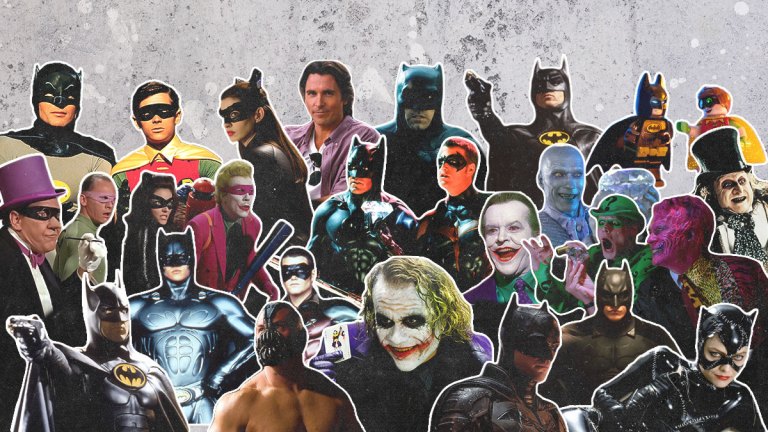
A case can be made that Batman is the quintessential cinematic superhero. He’s certainly been the most adapted to the big screen, with the Caped Crusader starring in 12 theatrically released films when you count animation and William Dozier’s Batman: The Movie tie-in from 1966. There’s good reason for that ubiquitousness too.
The visceral mystique of a dark cowl and cape; the shadowy world of an urban landscape crying out for a hero; even the universally relatable origin of an orphan who seeks to fill the void left by his parents’ deaths. Much of the iconography Batman would come to define in superhero comics was on the silver screen first. After all, Batman co-creator Bob Kane once described the character as “half-Zorro,” and for most folks of his generation, Zorro was synonymous with Douglas Fairbanks in The Mark of Zorro (1920), the movie which made the story of a daring rogue in a black cape and mask (when he wasn’t playing the rich fop by day) famous. There is something elemental about Batman. As the template for many superhero characters, he lends himself to cinematic reinterpretation and elasticity. This has created a landscape where both Adam West and Robert Pattinson have played this character, and each version is perfectly valid.
But while all Batman movies might be valid, not all Batman movies are created equal. Over the span of nearly 60 years, multiple generations of auteurs and distinct stylists have offered their take on the character, from Tim Burton and Joel Schumacher, to Christopher Nolan and Zack Snyder. Yet who’s is the best? Which Batman stands above them all? We’ve polled our staff to figure it out!
*Editor’s note: We have decided to limit this list to theatrically released feature films where Batman is the lead character. That means all of the straight-to-video animated films and Batman serials of the 1940s have been omitted. We also decided to exclude the more ensemble-heavy Justice League.
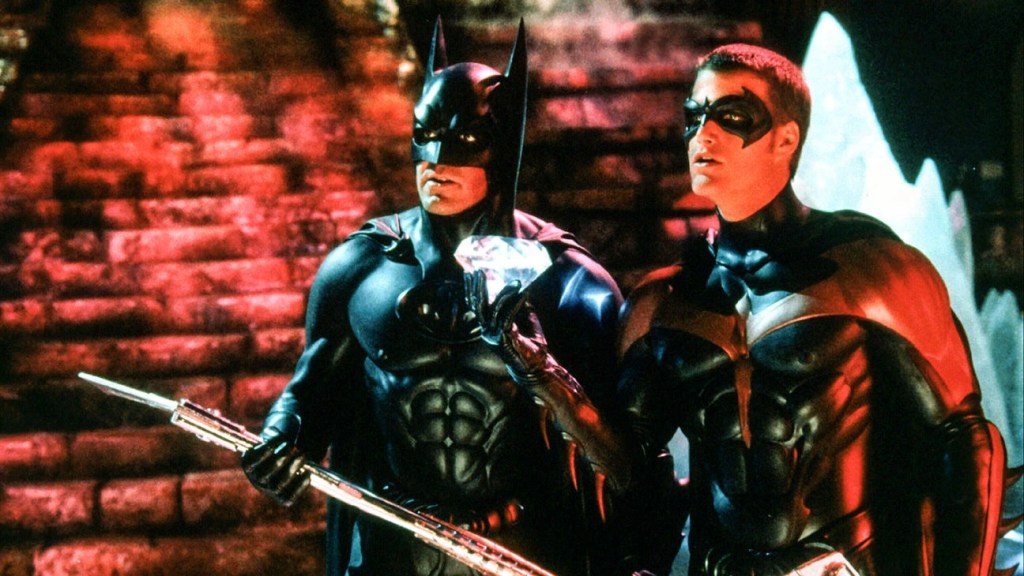
12. Batman & Robin (1997)
Although Batman & Robin has its fans and defenders (this writer included, honestly), there’s no denying that the movie was a misstep for Warner Bros. back in ’97. With this pun-riddled, truly unfunny, very questionably cast, and toy-obsessed installment, director Joel Schumacher and writer Akiva Goldsman almost achieved what Batman villains could only dream about: killing off the Caped Crusader for good. It almost happened when the director and writer made Bats the butt of the joke, complete with a Bat-credit card and those nipples (which still are nowhere near as offensive as some modern directors’ takes on the character). George Clooney’s phoned-in turn as the Dark Knight is nothing to write home about either.
But if you were six years old when this movie came out, you were showing up for the zany action sequences that make little sense but feature wild gadgets (Bat-skates!), Arnold Schwarzenegger chewing up and spitting out every scene as the dad-joke obsessed Mr. Freeze, and Schumacher’s vision of Gotham City. In fact, the latter has withstood the test of time with its streets bathed in neon and giant Olympian statues with arms big enough to fit a Batmobile car chase. This version of the city is pure colorful spectacle and architectural excess. It’s just too bad the rest of the movie can’t support Schumacher’s keen eye for aesthetics. – John Saavedra
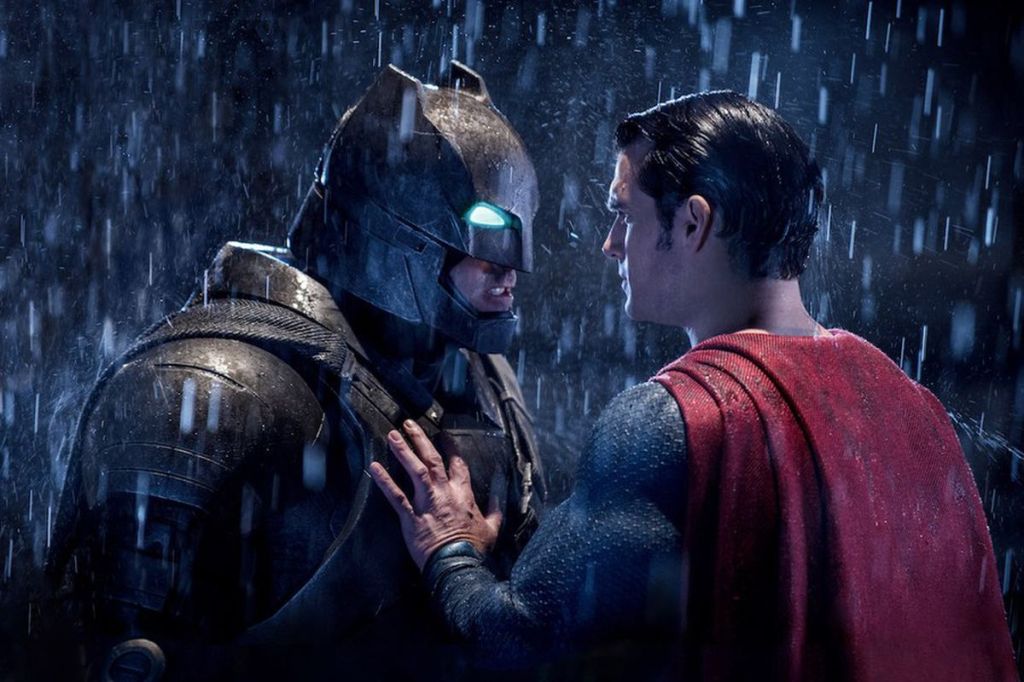
11. Batman v Superman: Dawn of Justice (2016)
Batman v Superman: Dawn of Justice is a big, shambling, incoherent mess of a movie, but one of Zack Snyder’s strengths has always been in his casting: Ben Affleck is an excellent Bruce Wayne, bringing an organic darkness, intensity, and world-weariness to the role while cutting a commanding figure in both a three-piece suit and the cape and cowl. Equally top-notch is Jeremy Irons as Alfred; the interactions between the two crackle with chemistry–-you feel the weight of the years between them. We’re not so keen on the way Batman is portrayed overall, however, with Snyder making him into more of a bloodthirsty psychopath than ever before. Still, Affleck tempers that written malice with his customary personal warmth.
The bigger problem is with the rest of the movie itself, which jams so much into its two-and-a-half hours but is never sure of what it wants to say or what its ultimate point is. The movie becomes more nonsensical as it goes along, and even the best efforts of Henry Cavill as Superman and Gal Gadot in her brief but mesmerizing debut as Wonder Woman can’t help the feeling of desperation that permeates the entire affair. And the whole thing could have been avoided if our title heroes—who kind of act like jerks toward each other for most of the movie—had just stopped a minute to talk. – Don Kaye
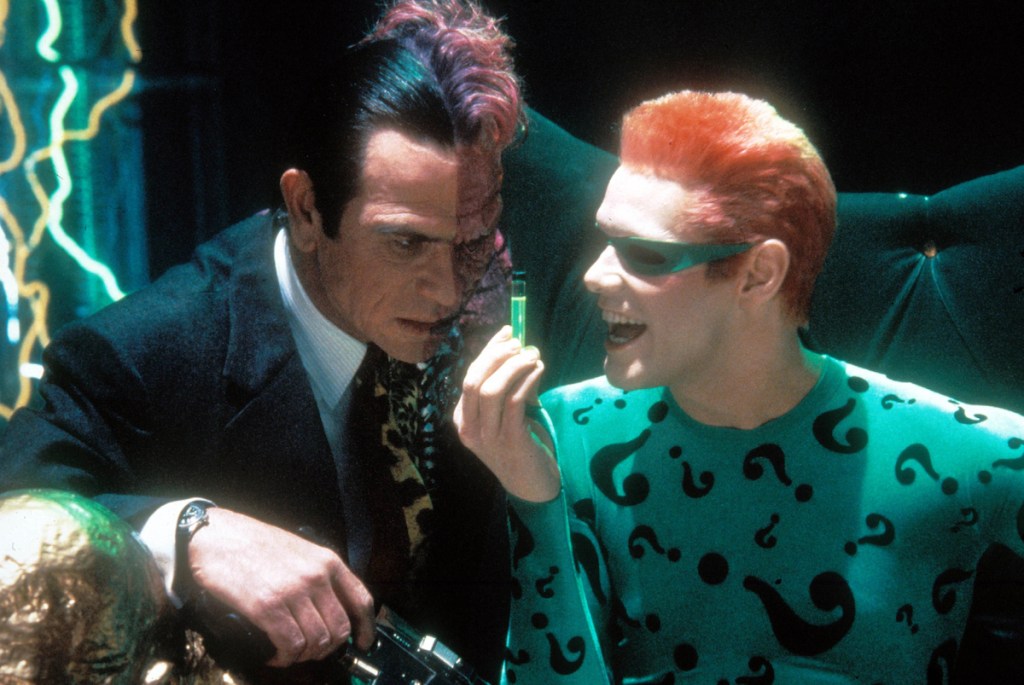
10. Batman Forever (1995)
To put it gently, Batman Forever has not aged very well. Produced by WB as a naked attempt at a brand course correction after the hideous reception of Batman Returns, the film was a product intended to appeal to children who buy action figures and teenagers who purchase slickly produced, and all around awesome soundtracks. But for those of us who were children or teens at the time, it produced some fond memories too. Bat-Nipples and all.
Taking over from Tim Burton, director Joel Schumacher turns Gotham City into an even gaudier, more neon-bathed, and homoerotic riff on Las Vegas. Here the nude statues are tall, the lights glitzy, and Batman gets drive-thru. It’s campy stuff, but it honestly plays like one of the better episodes of the ’66 TV series whenever Jim Carrey is doing his Frank Gorshin interpretation of the Riddler, or Batman and Robin (a comatose Val Kilmer and a wooden Chris O’Donnell) are bonding over dead parents. Throw in Nicole Kidman at her vampiest and Tommy Lee Jones in the worst performance of his career, and you have a tacky, loony, but still mildly entertaining toy commercial. – David Crow
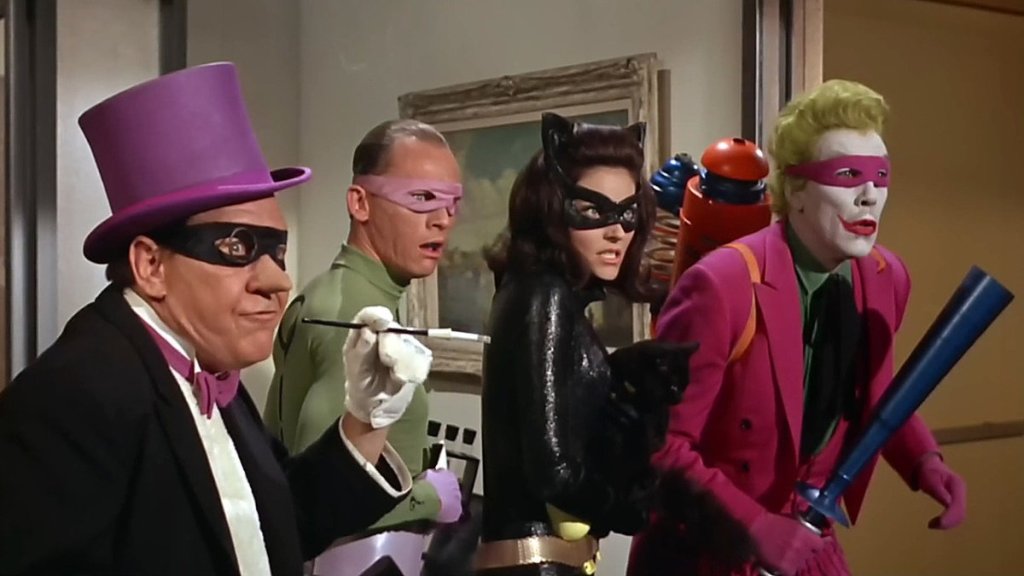
9. Batman: The Movie (1966)
Look, you’re either on board with the style and tone of the 1960s Batman TV series (and its attendant feature film offering) or you aren’t. But the simple fact is that while this film continues the TV show’s theme of functioning as a send-up of both superheroes and authority figures in general. It’s also as faithful an adaptation of the Batman comics of that era as one could ever hope to see. They knew exactly what they were doing. This is what you get when you make as close to a literal translation of silver age superhero comics to the screen, and no matter how much the naysayers may try to convince you that Batman only works as a tortured, brutal vigilante without a Robin, there’s tremendous appeal in the brightly colored, spandex-clad incarnation of the Dynamic Duo embodied by Adam West and Burt Ward.
Initially conceived as a film that would arrive BEFORE the TV series, Batman instead arrived between seasons one and two of the show, right at the peak of the “Batmania” generated by its pop art sensibility, subversive comedy, and endless parade of “special guest villains.” It’s difficult to judge this Batman as a feature film, sharing as it does so many of the aesthetic sensibilities of its TV counterpart, but it nevertheless boasts a bigger cast (anchored by FOUR legendarily zany villains, including/especially Frank Gorshin’s inimitable Riddler), a comparatively extravagant budget (which allowed for the creation of a fully functional Batboat, Batcopter, and Batcycle), and a more expansive (and absolutely swingin’) score by the legendary Nelson Riddle (no relation). As much a curiosity of ‘60s pop culture as the following year’s bizarre (and far less effective) send-up of Bondmania, Casino Royale, Batman remains a brilliant comedy and one of the most faithful superhero adaptations ever put to film. – Mike Cecchini

8. The Lego Batman Movie (2017)
The Lego Batman Movie might not be the coolest Dark Knight adventure on this list, but it sure is the funniest. Chris McKay’s irreverent animated spinoff movie, produced by Jump Street and Into the Spider-Verse overlords Phil Lord and Christopher Miller, kicks off with DC’s Lego multiverse Batman debuting an ego-stroking heavy metal song about how he’s going to kick the Joker’s ass. It somehow gets even more nuts from there when Batman manages to do something worse: he hurts the Clown Prince of Crime’s feelings.
Frenetic and exhausting, the film takes every character on a journey of discovery, and understands that Batman and Joker are inexorably linked. Neither of them can really live up to their potential without the other! It also features an eye-popping smorgasbord of DC heroes and villains, along with myriad other appearances by the likes of Lord Voldemort, King Kong, and the Daleks. The Lego Batman Movie is truly the wildest cinematic ride Batman has ever been allowed to embark on, and it’s unlikely we’ll see him do anything close to this bonkers in the theater again. – Kirsten Howard
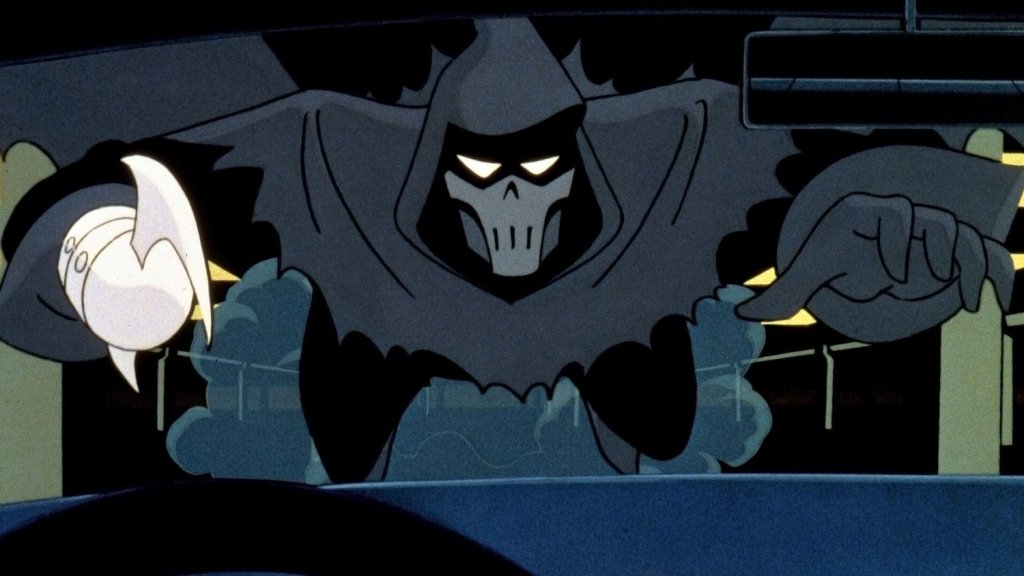
7. Batman: Mask of the Phantasm (1993)
Few Batman series—on-screen or in print—have been as influential as Batman: The Animated Series, and Mask of the Phantasm is the perfect encapsulation of this era of the Caped Crusader. Imbued with Bruce Timm and Eric Radomski’s unique designs for characters and a setting that feels of another time, even as it remains remarkably fresh all these years later, Mask of the Phantasm also provides an excellent entry point for newcomers to the Bat mythos.
This breezy 78-minute Batman film (can you believe this runtime?) provides not only a definitive origin story for the Dark Knight of the ’90s but also a shock to the system for the character when a former beau—the love of his life, the elusive Andrea Beaumont—returns to Gotham out of the blue. Yes, there’s plenty of action, driven by Kevin Conroy and Mark Hamill’s now legendary vocal performances as Batman and Joker, respectively, but at the movie’s very center, what makes it all come together, is the romance and (later) tragic heartbreak between Bruce and Andrea. Bruce questions his mission, but it’s not due to failure or injury. Here, he’s just wondering if for once he deserves to enjoy the life of a regular guy. Captivating stuff! – JS
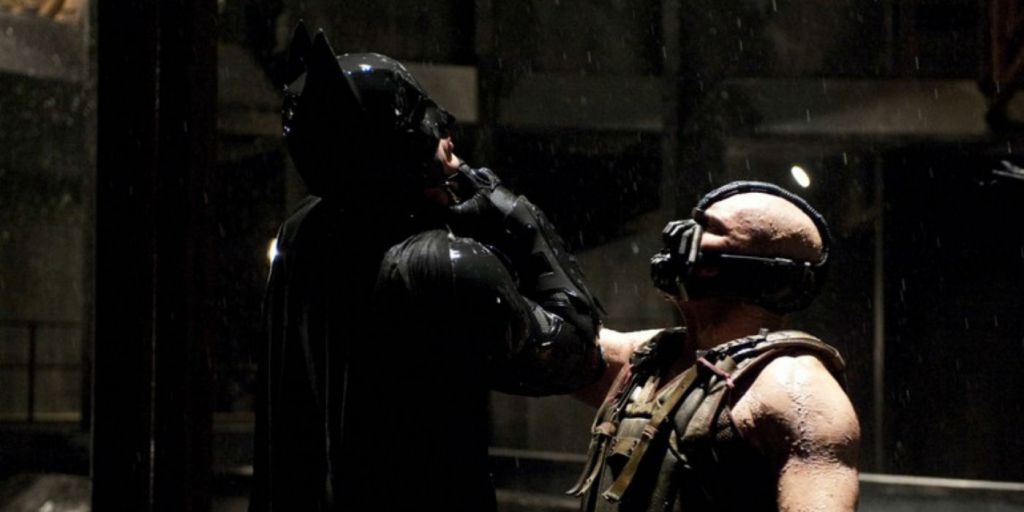
6. The Dark Knight Rises (2012)
You could probably call a few of us around here Dark Knight Rises defenders. Some would even argue this movie should be higher on the list. A victim of expectations that come from following a stone-cold masterpiece like The Dark Knight, Christopher Nolan’s third Batman film is controversial in fan circles, particularly because it provides a vision of the character not entirely like the comics. But that’s what makes it great.
Christian Bale and Michael Caine were never better as Bruce and Alfred than in the one where Batman is forced to confront his mortality, as well as the fact that an adult man who defines his life through the trauma of his parents’ deaths is in some ways broken. Rises offers the one piece of Batman fiction where the character is allowed to fully heal from that wound. It’s also told on a sweeping scale reminiscent of David Lean, with Nolan continuing his trend of grounding the villains in a post-9/11 verisimilitude, and turning Bane (Tom Hardy) into a comic book metaphor for populist demagogues who whip up mobs into destabilizing forces. (An idea that seems less far-fetched in the 21st century after Jan. 6, 2021.)
Beyond that, it’s just a gripping IMAX spectacle with Hardy providing a flamboyant case study in scene-chewing villainy, and Anne Hathaway creating an underrated and compelling interpretation of Catwoman. If you want to know why this movie works, consider it’s the only one that got audiences to cheer by ending on the image of Bruce and Selina drinking vino while on vacation. – DC
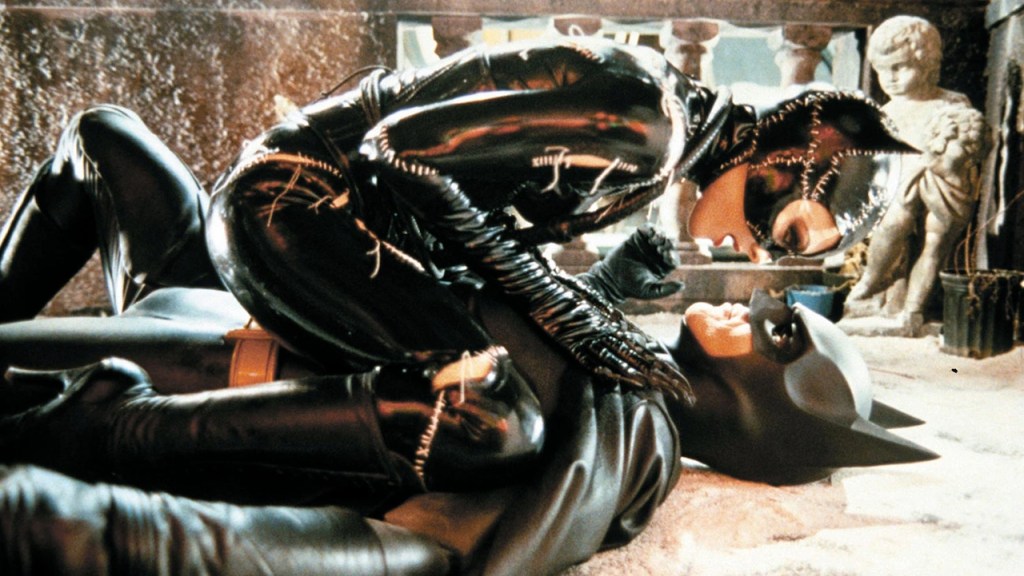
5. Batman Returns (1992)
No one’s ever made Batman feel more like a little freak than Tim Burton armed with a script from Heathers scribe Daniel Waters. After the blockbuster success of Batman ’89, Burton wanted the road not taken for the sequel. A complete rejection of the modern Hollywood corporate thinking that fans only want “more of the same but bigger,” here is Burton cutting the character’s head open and peering inside to see what makes a guy who dresses up as a Bat to fight crime tick. If in ’89, Michael Keaton proclaimed “I’m Batman,” Batman Returns is Burton asking, “Okay, but what’s up with all that rubber?”
The 1992 film paints the Caped Crusader as a true outcast, even among the other costumed weirdos in the movie. They reject him as one of their own, which still feels like an original way to explore the character today. Keaton plays his Bruce at his most tortured here, alone in his big mansion, waiting for the city to light the signal so he can become his true self. But even better than Keaton are Michelle Pfeiffer’s steamy take on Catwoman at her most dominatrix, Danny DeVito as the creepiest Penguin of all time, and a grimy Max Schrec played by a scene-stealing Christopher Walken. Together, this ensemble produces the most grown up, horny, and strange take on Batman ever made, complemented perfectly by Burton’s love of German Expressionist cinema. Over 30 years later, this movie is still a beautiful sight to behold. – JS
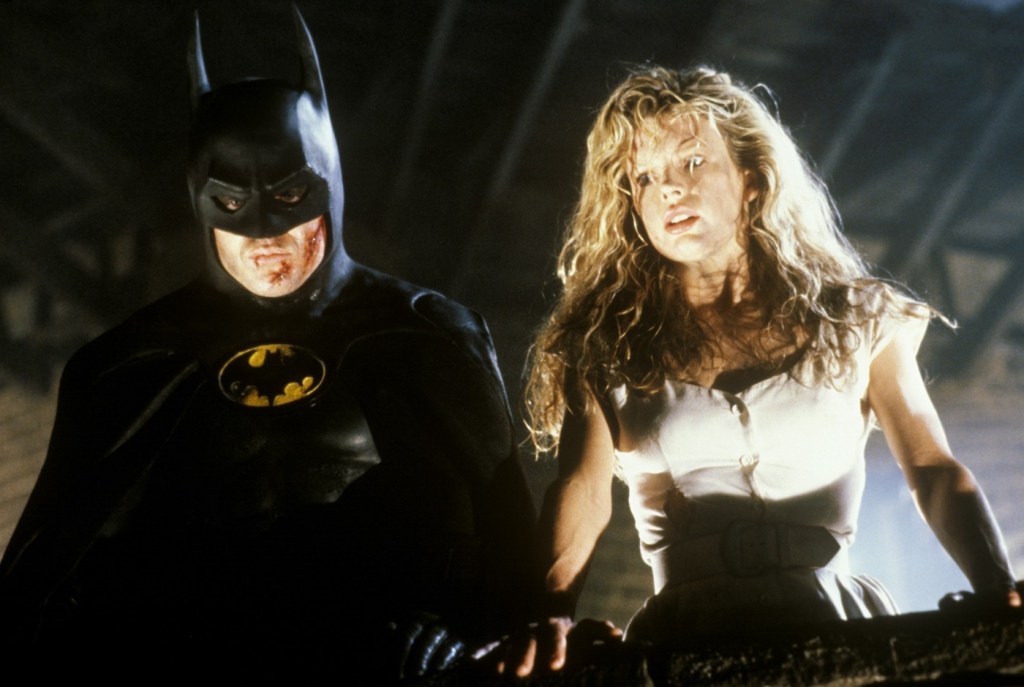
4. Batman (1989)
It can’t really be overstated how much Tim Burton’s Batman changed everything. Superhero movies weren’t just rare, they were practically non-existent, with Christopher Reeve’s once majestic Superman franchise having met an ignominious fate with 1987’s unfortunate Superman IV: The Quest for Peace. The thought that a major studio would spend an astronomical budget on an “adult” take on Batman was outrageous, particularly at a time when the prevailing pop culture perception of the character was still rooted in Adam West’s brightly colored performance thanks to the 1966 TV series’ constant presence in syndicated reruns. So for an oddball director like Tim Burton to craft a black-clad Batman (a surprisingly perfectly cast Michael Keaton), a mass-murdering Joker (Jack Nicholson at the absolute peak of his scenery-chewing power), and a truly foreboding and gothic Gotham City, and turn it into one of the biggest summer movies of all time, is a superheroic feat unto itself.
And while Batman has since been “out-adulted” by even more “realistic” takes on the Caped Crusader (courtesy of Christopher Nolan and Matt Reeves), the 1989 film was a key reason that Hollywood execs started seeing the genre as truly viable. Sam Hamm’s vice-tight screenplay pulls some light thematic inspiration from definitive comics stories of the era, like Batman: Year One, The Dark Knight Returns, and The Killing Joke, while forging its own path as the first ever screen exploration of the origins of both Batman and the Joker.
The sprawling, intricate Gotham City sets created by Anton Furst (for which he won an Oscar) are a practical feat that remains impressive today, as are the costume designs which evokes 1940s style meets ‘80s chic on all the civilians. The film also features the best looking Bat-suit ever put on film, making this as visually engrossing a movie as you could hope for. It may not still hold the cowl as the best Batman movie ever made, but between Keaton and Nicholson giving it their all, and Burton giving it his all without letting his quirkier sensibilities overwhelm the story, it’s still every bit as enjoyable today as it was over 30 years ago. – MC
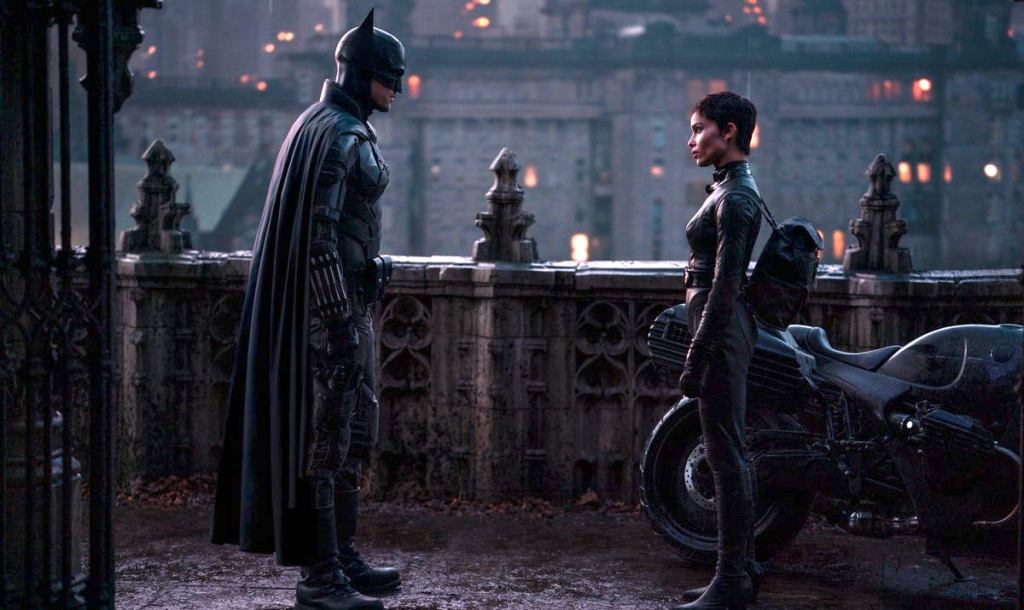
3. The Batman (2022)
Is The Batman in some ways the real sequel to Batman Begins, to be followed by The Dark Knight? With a little tweaking of the timeline and certain narrative events (no visiting the Joker in prison, for instance), that scenario just might work. If anything, Matt Reeves’ reinvention of the mythos builds upon the work that Christopher Nolan did, making Gotham City even darker and grittier while giving us a Bruce Wayne/Batman who’s becoming more seasoned yet is still a work in progress.
The Batman is as epic in scope as the Nolan films, if a bit more retro in its aesthetic, which is refreshing. As much as we love Nolan’s designs, it’s nice for a change to see the Dark Knight driving a souped-up muscle car in essentially a leather outfit, as opposed to steering a tank in a suit of armor. While we still have mixed feelings about reinventing the Riddler as basically the Zodiac Killer, Colin Farrell’s brutish yet nuanced Penguin is the best screen version yet of this often-undercooked antagonist. As for Robert Pattinson in the title role, he mixes an enigmatic quality with enough human weakness to give us a Batman that’s both traditional and uniquely his own. We look forward to seeing him in the cowl again. – DK
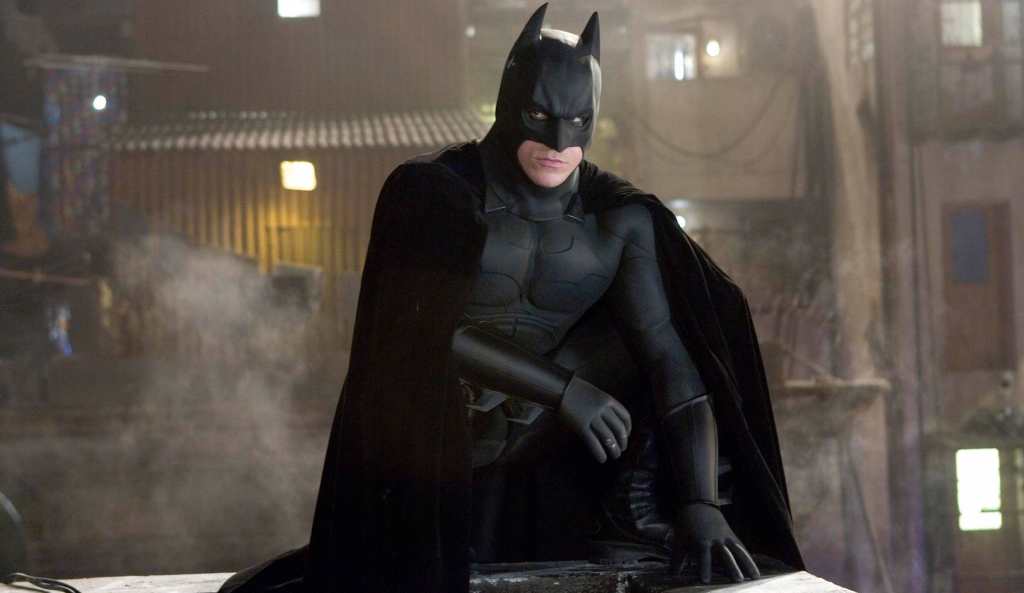
2. Batman Begins (2005)
It’s hard to remember now, but the idea of doing a Batman origin story was a genuine novelty in 2005. At the time, we had only seen the Wayne parents be murdered once in live-action, courtesy of Tim Burton, and that was pretty much all that film had to say about the Dark Knight’s genesis. Yet the ingenuity of what Christopher Nolan began with Batman Begins was not that he made “an origin movie,” but that he made the best origin movie ever devised in this genre.
Taking a page from Richard Donner, Nolan grounded his superhero movie in a surprising level of credibility by relying on a prestigious cast of respected thespians and award winners: Michael Caine, Gary Oldman, Morgan Freeman, Liam Neeson. But perhaps the most intelligent choice was casting Christian Bale. The British actor had the obvious physique of a superhero (when he wanted to), but the performer also brought a boyish vulnerability to the character that grounded his decision to wear a mask shaped like a bat. Suddenly, a flight of fancy felt psychologically true, overplayed gravelly voice notwithstanding.
And around that central anchor, Nolan builds an extravagant old school Hollywood epic that, yes, puts Batman in something more closely aligned with our world, but it also throws Bruce Wayne out into it. The movie begins in the snowy mountains of the Himalayas and travels to the streets of Southeast Asia. Even Gotham now has a distinctly Chicagoan flavor. While a movie with water-laced fear toxins isn’t realistic, the film creates an illusion where, while watching it, the story feels deceptively plausible. The results allow audiences to all the more happily indulge the bombast and spectacle, including what would be the first of many crackerjack Batmobile/Batcycle chases in Nolan’s trilogy. All the while Nolan’s Bruce seems less like a madman than he does a very theatrical activist building a covert operation within a city’s institutions. It’s a superhero origin story, but it’s done with class and cinematic grandeur. – DC
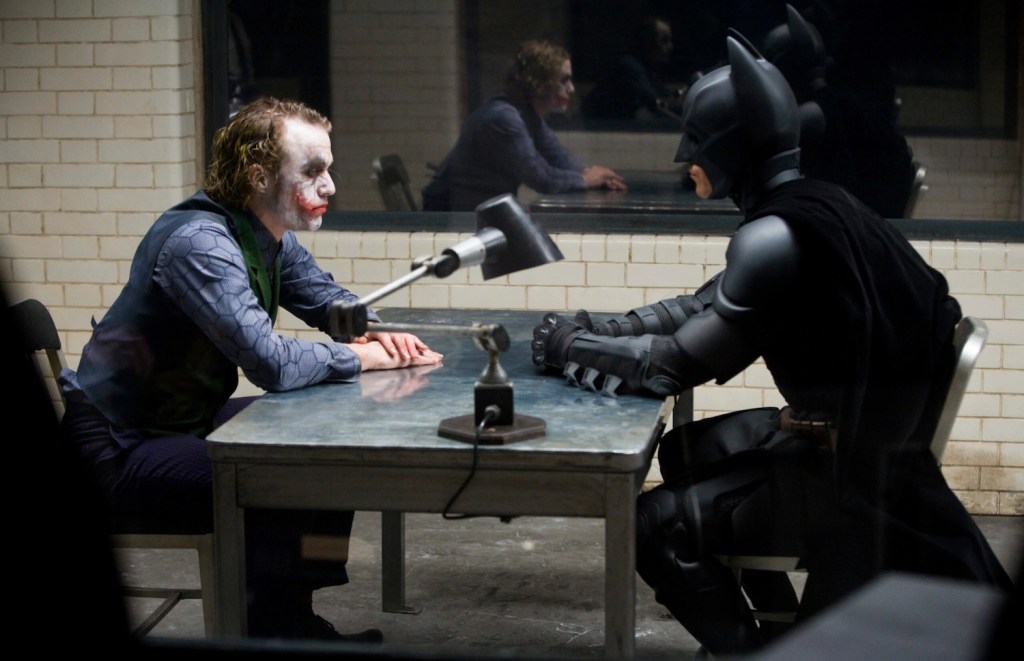
1. The Dark Knight (2008)
What’s there to be said about Christopher Nolan’s masterpiece that hasn’t already been said thousands of times before? While its exact position among the pantheon may fluctuate from time to time, The Dark Knight remains firmly among the best superhero movies ever made (many on our staff call it the best), both in terms of its sheer quality as a film and its earthshaking impact on the genre and cinema history itself. While Nolan had already established himself with his five previous films as a director interested in melding an arthouse narrative sensibility with a blockbuster approach to the craft, no one could have imagined that he would create a movie often referred to as The Godfather of the comic book genre.
Sure, he did successfully reposition and reboot one of DC’s crown jewels with Batman Begins, bringing a realistic approach to material that had been sullied by the excesses of Joel Schumacher and even Tim Burton. But with The Dark Knight, he gave the genre and the character a gravitas, power, and sense of spectacle that had only been previously realized in the very best of the comics. The film also established Christian Bale as the definitive big-screen Batman of our time, and allowed a movie with literally pulp fiction roots to be about something relevant to the modern world (in this case a primal fear of chaos in the Bush Years). A superhero movie being about something had perhaps only been touched on by the X-Men movies before this.
And then, of course, there’s Heath Ledger’s Joker, once and for all setting the gold standard against which all supervillains will be judged. Portraying the Clown Prince of Crime as a pure force of nature without any tiresome back story or trauma to weigh him down was a masterstroke. There have been and will be other great villains and great superhero movies, but Ledger’s Joker and The Dark Knight will cast their shadow over all of them for generations to come. – DK
